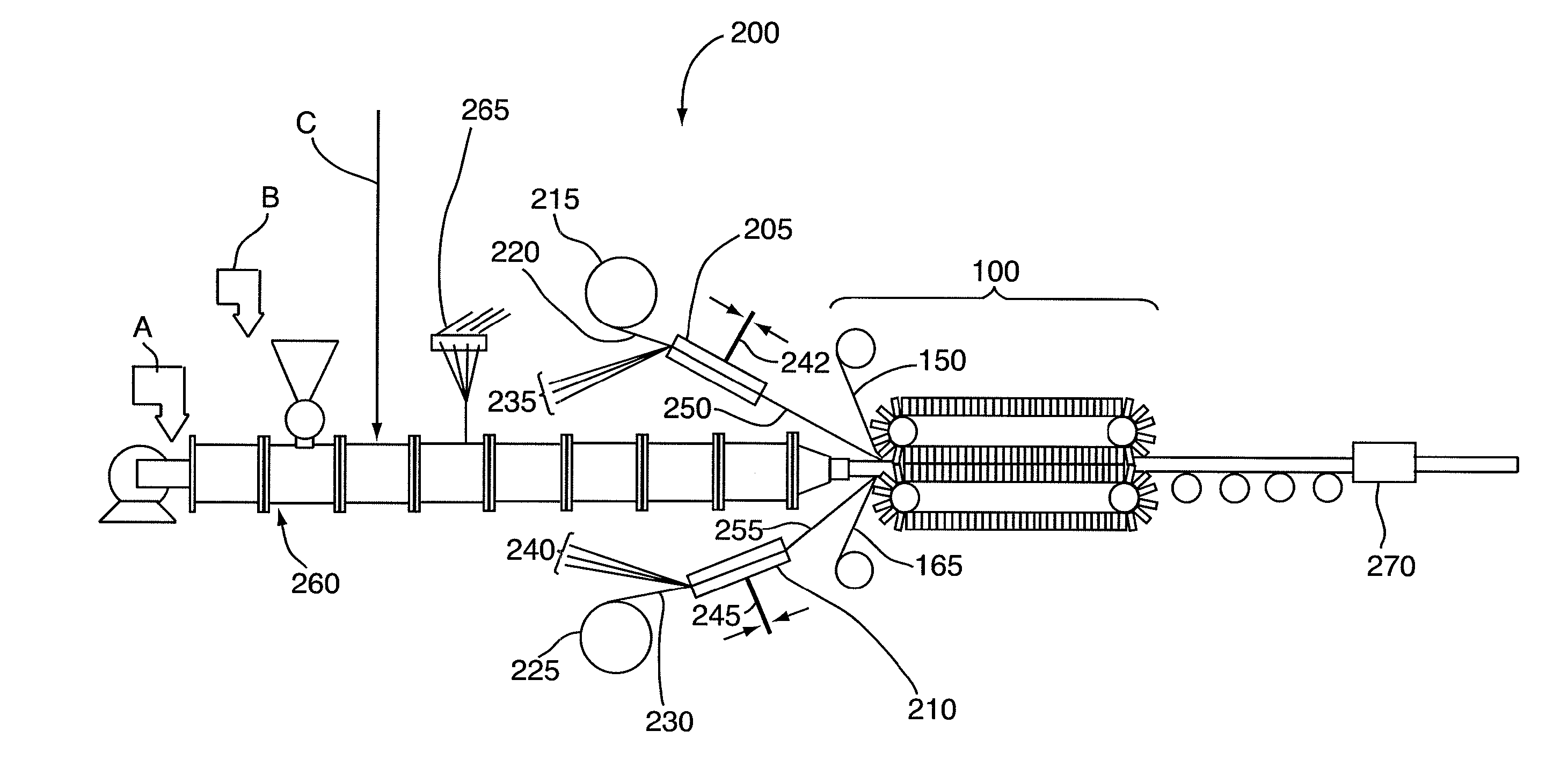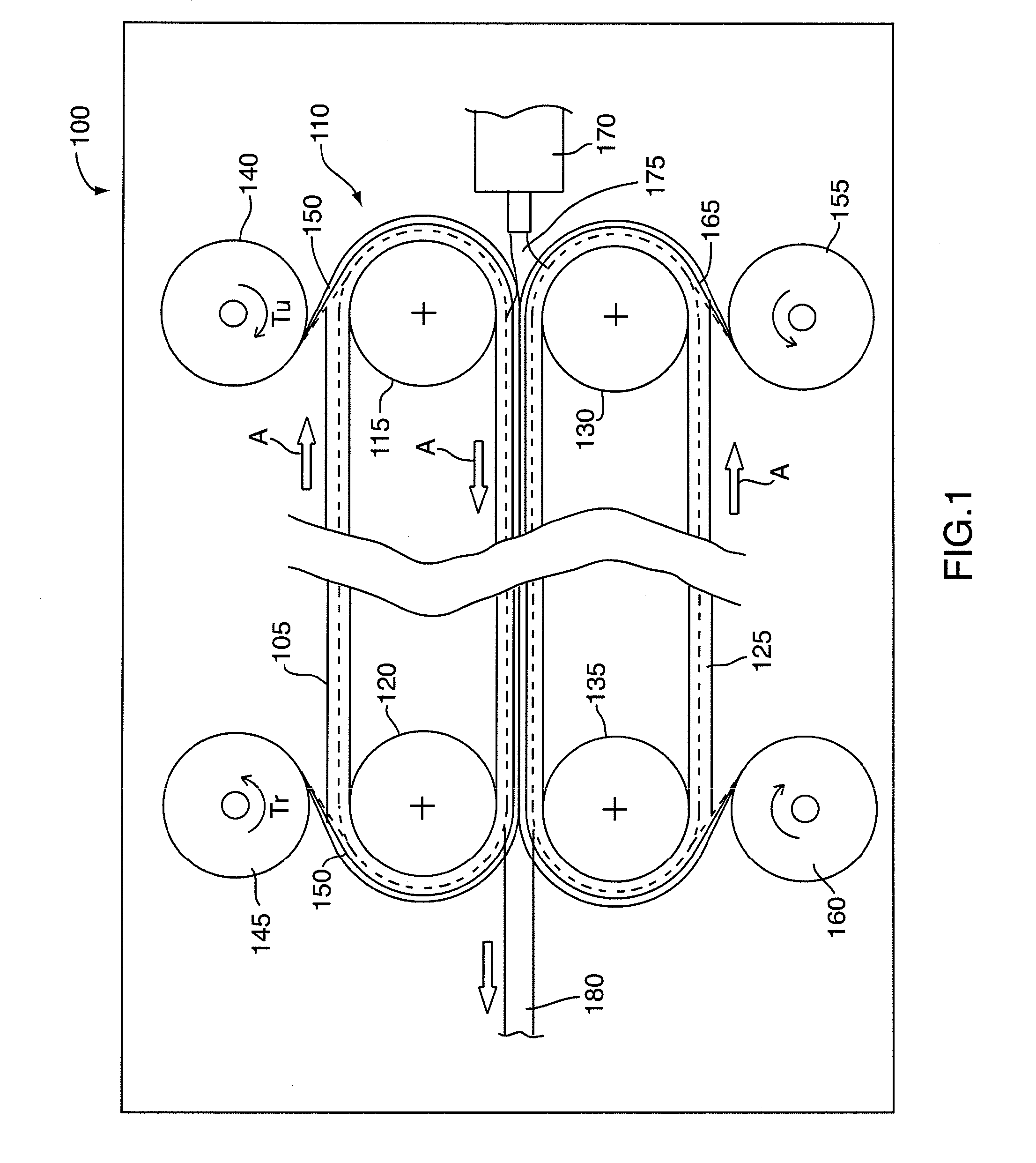Process for producing a molded product
a technology of molded products and molds, which is applied in the field can solve the problems of reducing overall efficiency, disadvantages of mold release agents, and increasing the overall cost of molded product production, so as to reduce the production of scrap, improve the quality of molded products, and significantly prolong the life of belts in belt molds
- Summary
- Abstract
- Description
- Claims
- Application Information
AI Technical Summary
Benefits of technology
Problems solved by technology
Method used
Image
Examples
Embodiment Construction
[0032]In one of its aspects, the present invention relates to a process for producing a molded product. Preferred embodiments of the process may include any one or a combination of any two or more of any of the following features:[0033]prior to Step (i), the first polymer layer is placed on the first molding belt;[0034]the process comprises dispensing the first polymer layer on to the first molding belt from a first leading roll operated to maintain a first stress on the first polymer layer;[0035]the first stress is in the range of from about 200 lb / in2 to about 2000 lb / in2;[0036]the first stress is in the range of from about 500 lb / in2 to about 1000 lb / in2;[0037]the process comprises the further step of adjusting a torque of the first leading roll as a diameter of the first leading roll changes to substantially maintain the first stress on the first polymer layer;[0038]after Step (iii), the first polymer layer is removed from the first molding belt;[0039]the process comprises trans...
PUM
| Property | Measurement | Unit |
|---|---|---|
| elongation at break | aaaaa | aaaaa |
| elongation at break | aaaaa | aaaaa |
| tensile strength | aaaaa | aaaaa |
Abstract
Description
Claims
Application Information
 Login to View More
Login to View More - R&D
- Intellectual Property
- Life Sciences
- Materials
- Tech Scout
- Unparalleled Data Quality
- Higher Quality Content
- 60% Fewer Hallucinations
Browse by: Latest US Patents, China's latest patents, Technical Efficacy Thesaurus, Application Domain, Technology Topic, Popular Technical Reports.
© 2025 PatSnap. All rights reserved.Legal|Privacy policy|Modern Slavery Act Transparency Statement|Sitemap|About US| Contact US: help@patsnap.com



